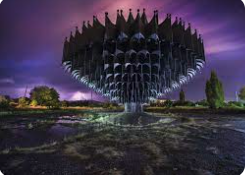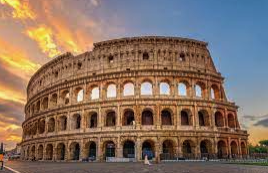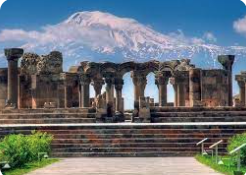Description
VARTANANTS SQUARE
If Yerevan is known as the Pink City, Gyumri should be called the Black City.
The first thing you notice about Gyumri is its striking architecture. Churches, municipal buildings and houses all look as if they’ve been blackened by fire.
The carbon colour is in fact the natural tone of volcanic tuff, stone quarried outside Gyumri and used to construct most of the older buildings. Orange-gold tuff stone is often used to detail windows, doors and arches. It’s a colour combination you’ve never seen before.
Vartanants Square (Freedom Square) is the anchor point of Gyumri. Many of the city’s most important and impressive buildings face onto the public space, including the City Hall and two of Gyumri’s most prominent churches. The square first opened in 1930 and has hosted many important events, including a mass by Pope Francis in 2016. A memorial dedicated to the Battle of Avarayr sits in the centre.
AMENAPRKICH (HOLY SAVIOUR’S CHURCH)
Holy Saviour’s Church on Vartanants Square in Gyumri, featuring a monument to the victims of the 1988 earthquake.
Occupying pride of place on the square, the Apostolic Holy Saviour’s Church was built between 1858 and 1872 based on the designs of the famous Armenian architect Tadeos Andikyan. Its form is based on the Cathedral of Ani.
The 1988 earthquake devastated the church and sent its bell tower tumbling to the ground. Look for the carved stones scattered in the grass around the church – these too fell from the facade.
The square at the back of the church is dotted with plinths, all inscribed with a clock face frozen on 11.41 – the exact time the earthquake struck that fateful winter morning. The striking pyramid-shaped monument is dedicated to the victims and the heroes of the earthquake.
YOT VERK CHURCH
Yot Verk, the Cathedral of the Holy Mother of God, is the smaller of two churches that sit on Vartanants Square. Constructed from charcoal-coloured tuft, it serves as the seat for the Diocese of Shirak, the local wing of Armenia’s Apostolic Church.
Yot Verk sustained major damage during the 1988 earthquake, but it was completely rebuilt and is a fully functioning church. Two hulking stone pyramids that once topped the church’s steeples but fell during the earthquake now sit in the front yard.
A thick grove of cherry trees shades the church from the square. A great time to visit is on Sunday mornings, when half of Gyumri, it seems, turns out for mass.
SEV BERD (THE BLACK FORTRESS)
Sev Berd is one of the most curious military structures you will ever visit. Made of black and apricot tuff, the fortress is a perfectly round circle with small external openings and one access point via a drawbridge.
It was built by the Russian Imperialists who ruled Gyumri (then known as Alexandropol) in the aftermath of the Russo-Turkish War in the 1820s. Barely 8km from the Turkish border, its hilltop location was highly strategic.
Russian forces still have a presence in Gyumri even today, and their army base is a stone’s throw from Sev Berd. But the fortification itself is no longer used for military purposes.
After a period of abandonment, private owners recently re-opened it as an entertainment space and a hotel. That’s right, it’s got a stage, a sound system and everything!
It’s usually closed during the day, but there is a caretaker on the property who will be happy to let you inside for a look.
Underneath the main stage, a ramp leads to a subterranean museum where photographs of old Alexandrapol and its resident Russian royals are displayed. You can also see the original well that troops used to access groundwater.
MOTHER ARMENIA
Next door to Sev Berd lies Gyumri’s Victory Park and its iconic Mother Armenia monument. These statues are a common sight throughout the former Soviet republics – Yerevan and Tbilisi have their own versions.
Gyumri’s matron was sculpted from bronze in 1975 as a tribute to the Soviet victory in WWII. Mother Armenia boldly raises one arm skyward while holding an ear of wheat in her hand. It’s no accident that she has her back turned to neighbouring Turkey.
A huge concrete staircase and fountain complex not dissimilar to Yerevan’s Cascade unfurls like a carpet at Mother Armenia’s feet. The memorial continues at the bottom of the stairs with gardens and stone blocks inscribed with the names of all the former Soviet capitals in Russian alphabet.
GYUMRI WWII MEMORIAL
At the base of Mother Armenia there is a second Soviet-era monument. This one is dedicated to the Great Patriotic War, better known as WWII.
The monument is inscribed with the dates 1941-45, a reference to the years of the Eastern Front when the USSR mobilised against Germany. It is a rather simple ensemble with a single fist emerging from the stone platform.
GYUMRI MARKET (GYUMRI SHUKA)
Gyumri’s Shuka is a cornucopia of local produce. When you visit in summer, it is all about the stone fruit: peaches, apricots, cherries and wild plums, plus juicy berries and figs.
One thing that never goes out of season are aromatic spices sold by the kilo.
Other stalls grind coffee beans to order, and sell slabs of basturma (cured meat), huge wheels of white cheese, and sheets of pale, fibrous mushrooms. Stallholders are outgoing and happy to pose for a photo while handing out samples of candied fruits and nuts.
The market is held daily between 9am and 6pm.
RIJKOV STREET & KUMAYRI HISTORIC DISTRICT
Before it fell under the rule of Russian Imperialists, Gyumri was known as Kumayri. The Historic District now takes this name, and represents the oldest part of the city.
Kumayri Historic District stretches across several dozen city blocks to the north-east and north-west of Vartanants Square. Pedestrianised Abovyan Street has some particularly magnificent facades.
The area is comprised of approximately 1,500 buildings in total, some dating back to the late 18th century. Houses subscribe to ‘Armenian Belle Epoque’, an elegant European style of architecture preferred by their craftsmen and merchant benefactors.
This area suffered serious damage during the earthquake and reconstruction is still an ongoing process many years on. Many of the buildings remain boarded up – a great shame considering their heritage value.
Built in 1898, the Old Alexandrapol Brewery on Jivani Street was one of the first buildings to be restored and now houses a functioning beer factory. Tours of the interior, which features 8-metre-deep underground cellars, are available on weekdays by appointment.
Opposite the Brewery on the corner of Gorki Street, another grand tuff building has been lovingly restored. It reopened as a restaurant, Florence, in 2019.
OLD HOSPITAL RUINS
Two blocks east of Jivani Street, you can see a confronting reminder of the 1988 earthquake up close. Hidden in dense forest behind the new Spitak Hospital, Gyumri’s old hospital was all but flattened by the tremors. The inside has been gutted, but the ivory-coloured bones of one wing are still standing today.
If you look closely, you can see the original Soviet hammer and sickle insignia mounted above the building’s main entryway.
THE IRON FOUNTAIN
The Gyumri Iron Fountain is located 4.5km north from the centre of town. For those interested in Soviet-era monuments and architecture, it is absolutely worth the short taxi ride.
Completed in 1982 by the architect Artur Tarkhanyan, the Iron Fountain sits forlornly in the middle of an empty lot with only a few industrial ruins nearby. This wasn’t always the case: When it was built, the fountain was the centrepiece for Gyumri’s Polytechnic University.
The campus was flattened by the earthquake in 1988, but the Iron Fountain lived up to its name and survived.
This has to be one of the most unusual pieces of architecture. From a narrow base, the fountain’s iron wings fan up and out before narrowing again to form a crown shape at the top.
If you walk around the fountain you can see the wonderful shadow patterns the iron pieces throw onto the concrete. It really is a very beautiful and considered sculpture that plays with the natural elements.
Museum-Gallery of the Aslamazyan Sisters
Two sisters born in a village near Gyumri, Mariam and Yeranuhi, were prolific painters and sculptors who were given special permission to travel outside the Soviet Union and literally paint what they saw.
Back home in Armenia, their exhibition openings were treated as diplomatic events. Vibrant canvases and ceramics depicting faces and scenes from India, East Asia and Latin America must have shaped perceptions of the outside world among their compatriots. Every one of the works displayed in their Museum is colourful and joyous – some even call Mariam Aslamazyan Armenia’s answer to Frida Kahlo!
The Aslamazyan Museum is open from 10.30am-5pm (closed Mondays).
Mher Mkrtchyan Museum
This museum is dedicated to an Armenian film star who was born in Gyumri. There aren’t any English didactics to describe the collection of theatre props and memorabilia, but staff can give you a brief narration.
The museum is open from 11am-5pm, closed Mondays
Museum of National Architecture and Urban Life
It explores the traditional trades of Alexandropol: woodworking, embroidery, tin work. Next door, a sculpture gallery displays works by Sergei Merkurov, the artist who famously cast Lenin’s death mask.
The museum is open from 11am-5pm, closed Mondays




Reviews
There are no reviews yet.